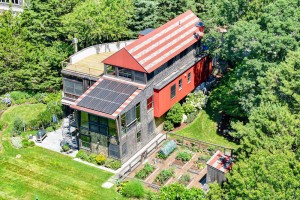Let It Slide
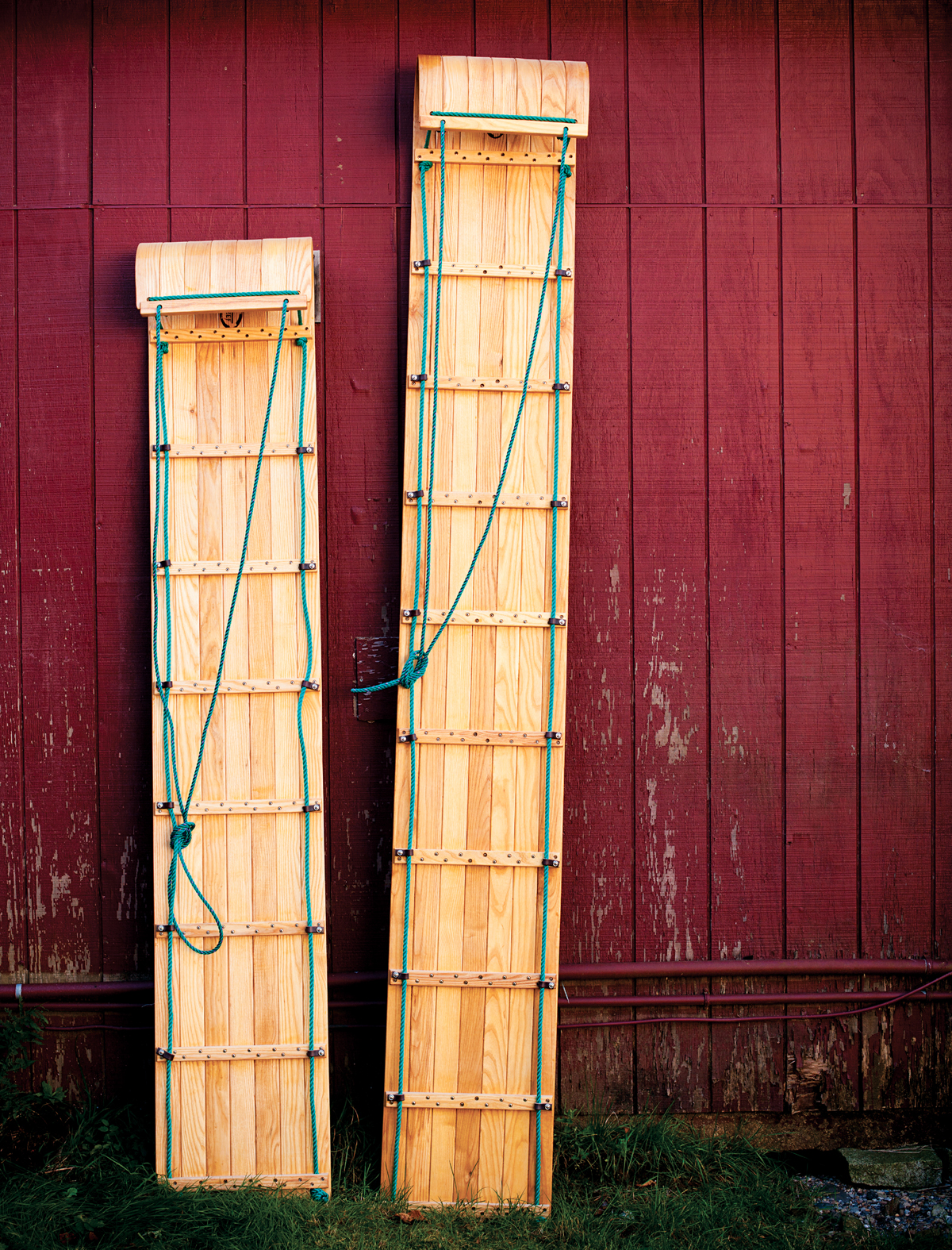
The 8-foot toboggan (left) is for teams of two to three people, while the 10-foot toboggan (right) can give up to four sledders the ride of their lives. (Photograph by Pat Piasecki)
Every February, way up in Maine where the Camden mountains meet Penobscot Bay, some 8,000 revelers come from as far away as Florida to barrel down the Camden Snow Bowl’s 400-foot-long snow-covered chute during the United States National Toboggan Championships. And when they arrive in their warmest winter gear via buses, planes, trains, and caravans, many of them stop at a modest workshop—simply known as Camden Toboggan Company—to pick up a freshly handcrafted wooden sled.
It was 21 years ago that David Nazaroff set out to build these toboggans for the two-day event at the suggestion of a friend. Although Nazaroff, the owner of a general contracting company, was a former winter-mountaineering instructor for Outward Bound, he’d never built anything like a sled, and wasn’t sure how to create its signature curved front. “But before we even made [the prototypes] the phones started to ring,” he says. “So we figured it out.” By Christmas, he and his team had produced four toboggans for a local couple’s sons.
Over the course of the next year, Nazaroff perfected his technique, ultimately selling close to 50 sleds by the time the next competition rolled around. “In Maine, in the winter,” he says, “there’s not a heck of a lot that goes on. But this event attracts people from all over.”
These days, Nazaroff and his chief toboggan maker, David Reed, buy native white ash from local loggers, then send the pieces to a nearby mill, where they are cut into thin planks. Back in the Camden workshop, they use sanding and edging machines to ensure the planks are smooth and uniform. “Once that’s done, we put ’em in the steamer and try to bend them,” Nazaroff says, referring to his custom-built 6-foot-long cedar “steam box” that hangs from the shop’s ceiling. After about 10 minutes in the warm, humid air, the planks are soft enough to bend around the wooden form, giving the toboggan its signature J shape. When the pieces are cool and dry, they’re ready for assembly.
For years, Nazaroff and his construction workers entered the competition themselves with lighthearted team names like “Ash Men” and “Piece of Ash,” once coming in third or fourth place—Nazaroff can’t quite recall. For him, like most participants, winning really isn’t the point: It’s simply about the joy of flying down a mountain at full throttle.
There are, however, a few tricks competitors can employ should they wish to increase their chances of a victory. “People often ask me, ‘What’s the secret to a fast toboggan?’” Nazaroff says. “Frankly, I think it’s the number of coats of urethane. But I like to tell them to put wax on it— bowling-alley wax. It’s not high-tech, but if you put it on a wooden floor, you’ll slide across it in your socks pretty fast.”
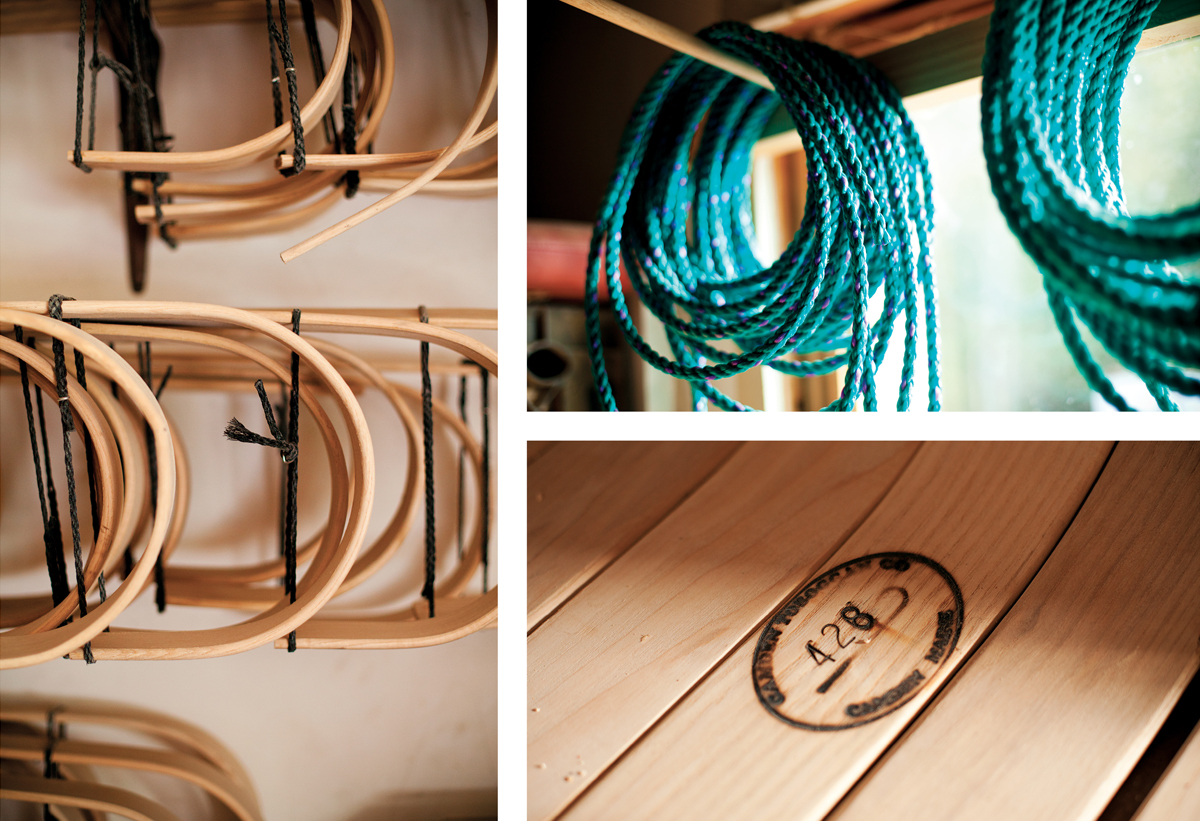
Photographs by Pat Piasecki
Clockwise from top left, planks are tied off with string to keep them curved; Nazaroff uses vibrant twine for the toboggan’s tow rope; each toboggan is stamped and numbered.
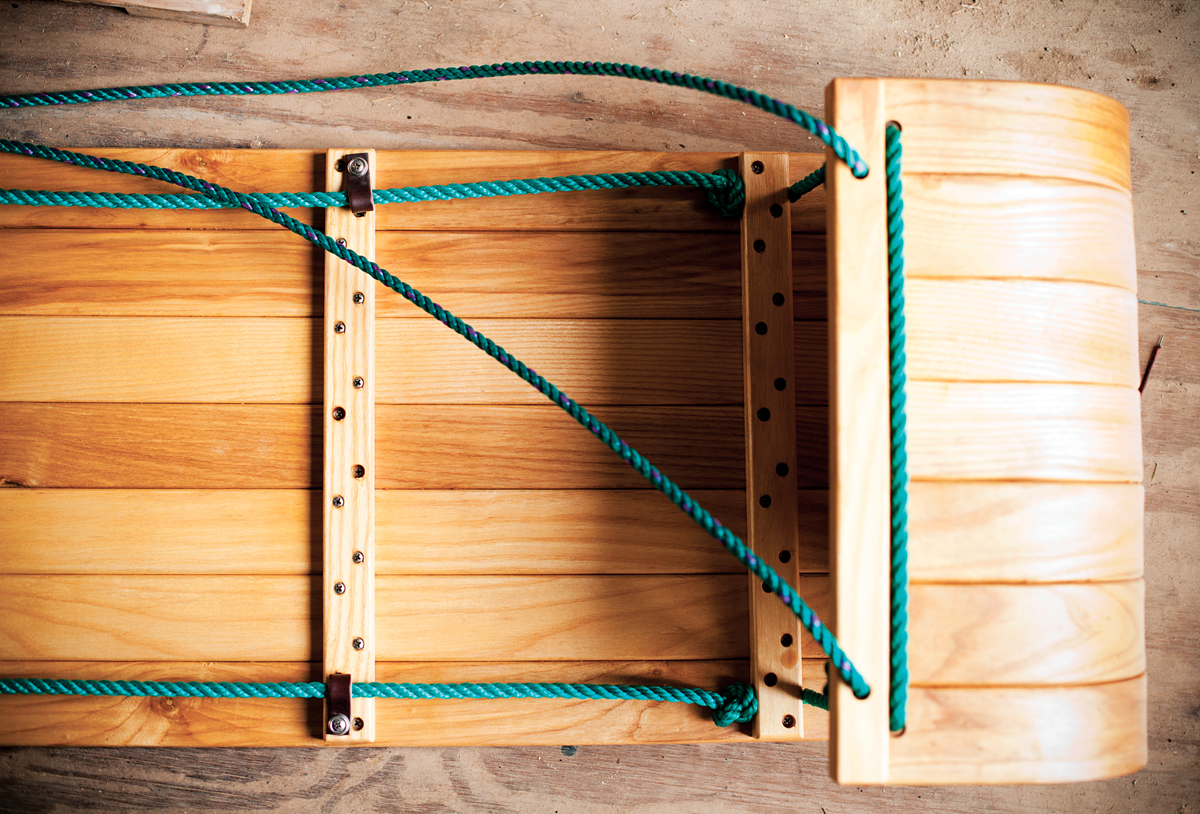
Photograph by Pat Piasecki
The sleds, which retail for around $350 each, are made with native white ash from local loggers and rope from SeaSide, in Warren, Maine.
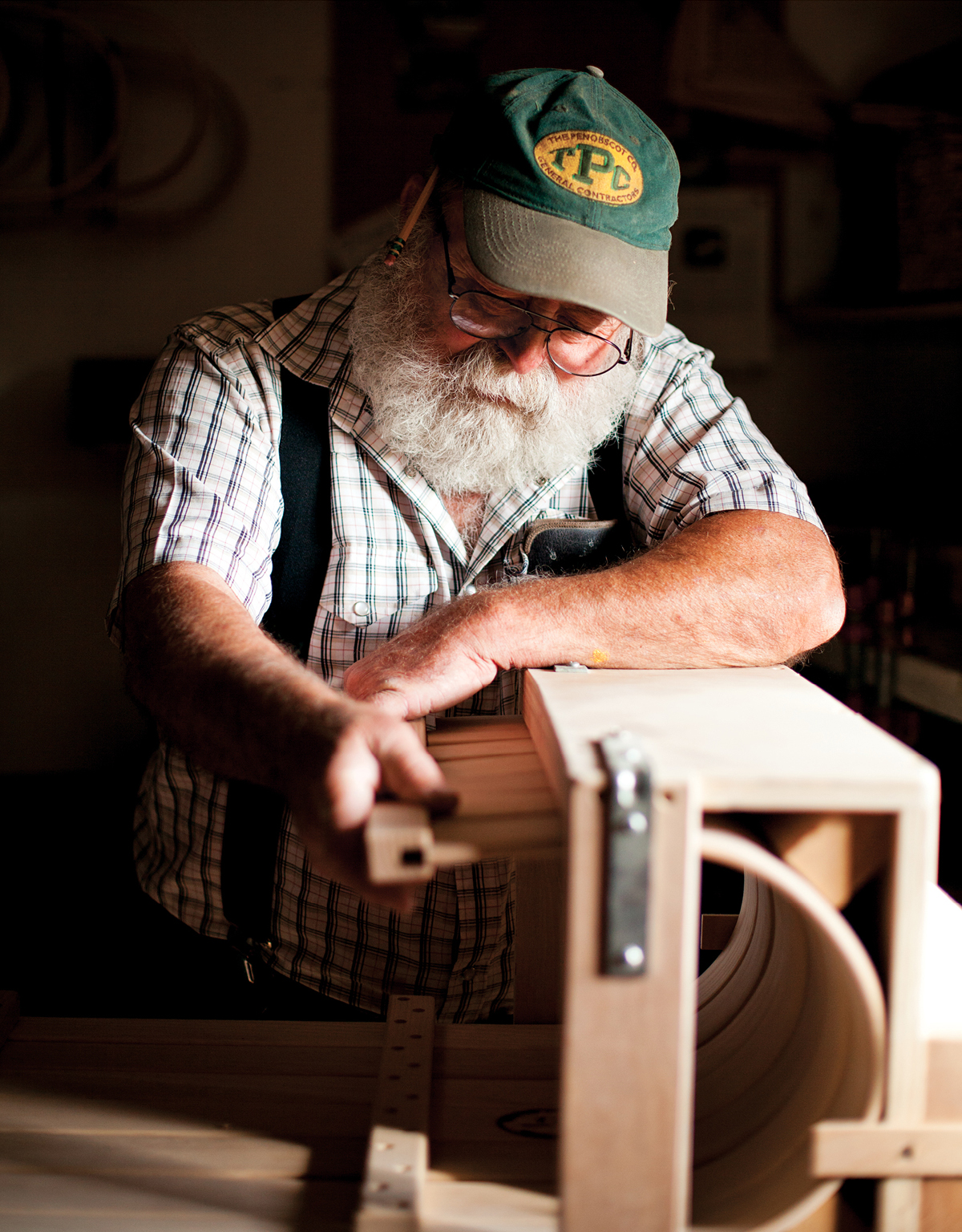
Photograph by Pat Piasecki
Toboggan-maker David Reed fits planks together seamlessly.

